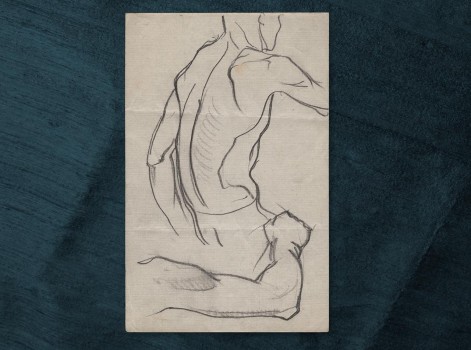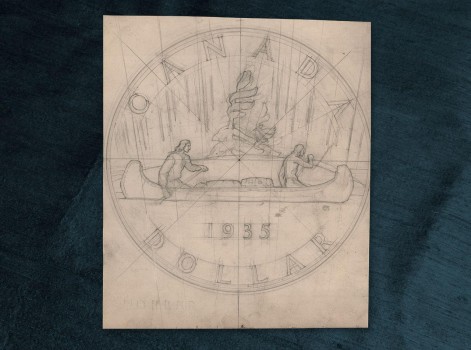Coin designs of Emanuel Hahn
An Emanuel Hahn First World War memorial design in Lindsay, Ontario. (Wikimedia Commons, Richard BH, Hamilton, ON)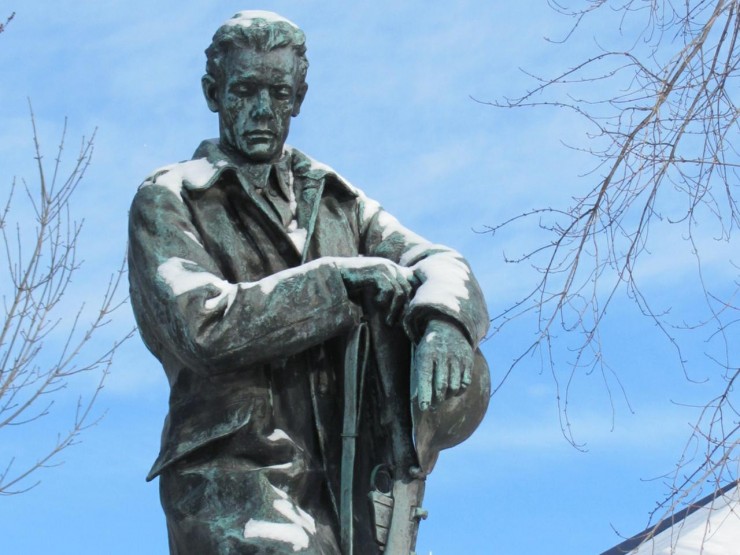
Emanuel Hahn was a celebrated Canadian sculptor whose work can be seen in the monuments of many Canadian cities. Born in Germany in 1881, Hahn immigrated to Canada with his family at the age of 7. Along with medals and a number of significant war memorials, Hahn designed some of Canada’s most distinctive and iconic coins. The voyageur silver dollar, the Bluenose dime, the caribou 25 cent piece and the 1939 silver dollar commemorating the Royal Visit of King George VI and Queen Elizabeth were all Hahn designs.
Pencil drawing by Emanuel Hahn sketching features proposed for the back of the 1935 silver dollar. 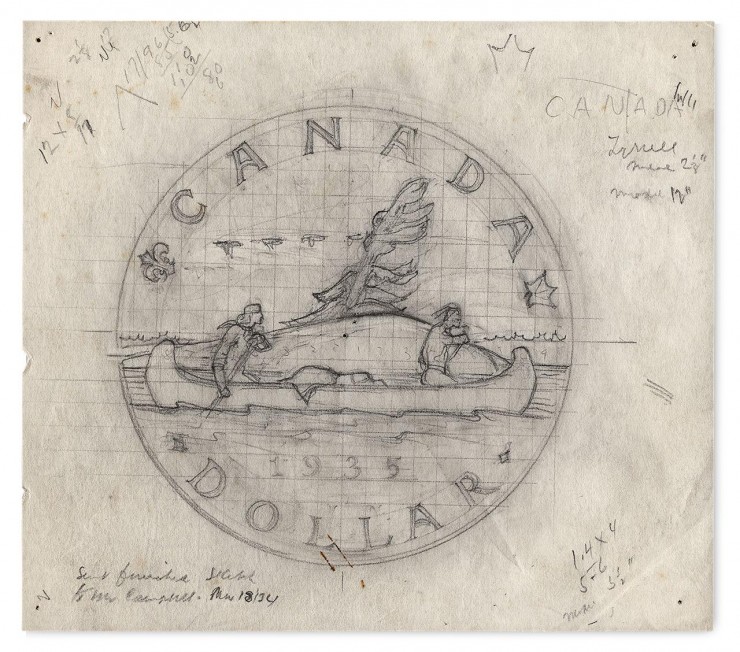
(NCC 1963.059.015.004)
In 1934 the Department of Finance invited Emanuel Hahn to submit a design for a silver dollar commemorating the silver jubilee of the reign of King George V. Hahn corresponded with the Royal Mint in London and the Royal Canadian Mint to gain insight into the process of minting a coin before submitting a drawing depicting a voyageur and a First Nations man paddling a canoe. To ensure accuracy, Hahn studied the designs of traditional canoes and the paintings of Frances Anne Hopkins. Hahn’s design was approved with only a few minor changes and was used as the standard pattern for the Canadian silver dollar until the introduction of the ‘Loonie’ in 1987.
Following the success of the voyageur silver dollar, Hahn was among several artists invited to submit designs for new Canadian coinage to be released in conjunction with the accession of King George VI, in 1937. Hahn produced no less than 16 sketches. His caribou (proposed for both the nickel and the quarter) and his Bluenose were both selected for the new coins. All of the designs put into circulation in 1937 are still to be found on Canada’s circulating coinage today. Hahn left an impressive mark on Canadian currency and all Canadians can be proud to have a ‘Hahn original’ in their pockets.
Reverse of 1935 silver dollar designed by Emanuel Hahn. 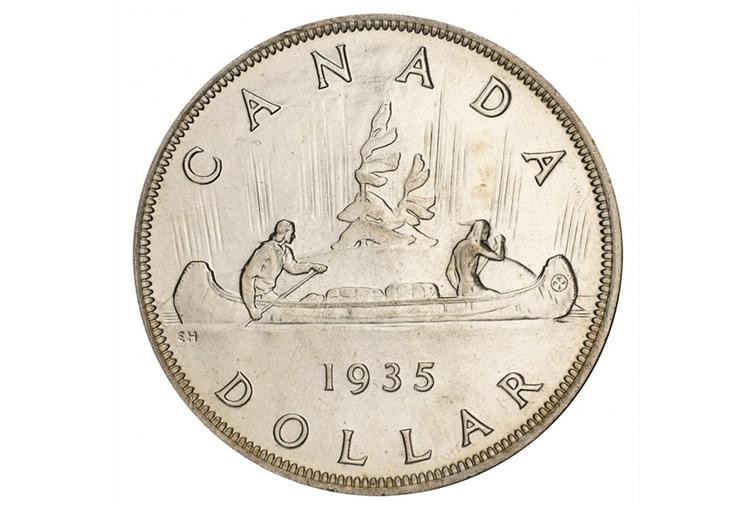
(NCC 1978.058.285b1)
Emanuel Hahn’s legacy of coins, drawings, plaster models and correspondence is preserved in the National Currency Collection of the Bank of Canada.
The Museum Blog
Private Atkinson’s War
By: Graham Iddon
Private Edward Atkinson’s example of trench art is what is called a “love token”—a souvenir made from a coin. It’s one man’s personal wartime experience expressed through a pocket-sized medium.
Bank Note/Billet de banque
By: Graham Iddon
The first Canadian paper money was issued in 1817, and for the next 120 years, the vast majority of Canadian bank notes were only in English.
RCNA Convention, 2019
By: David Bergeron
Bank of Canada Museum will be at the 66th annual convention of the Royal Canadian Numismatic Association (RCNA).
Landscape Engraved
By: Graham Iddon
Retaining the landscape format but showing human activity and intervention transformed the imagery into an extended portrait of Canada and Canadians.
The Hunting of the Greenback
By: Graham Iddon
During World War Two, the Bank created the Foreign Exchange Control Board (FECB). One of its major tasks was to find as many US dollars as possible to pay for American imports.
What goes up…
By: Graham Iddon
Economic bubbles continued to pop up regularly throughout history, and still do today.
Welding with Liquid
By: Stephanie Shank
In heritage conservation, broken metal objects can be reassembled with an adhesive most commonly used for repairing glass and ceramics.
Conserving the Spider Press
By: Stephanie Shank
Used extensively in the 19th century, this type of hand-operated press printed secure financial documents using the intaglio method.
How Does $ = Dollar?
By: Graham Iddon
How on earth did an “S” with a line or two through it come to represent a dollar? Any ideas? No? That’s OK, you’re in good company.
TTC Tokens and the Proposed 1978 Cent
By: David Bergeron
In 1977, the Royal Canadian Mint wanted to reduce the size of the penny in response to the rising price of copper. Little did the Mint know that the Toronto Transit Commission’s reaction would force the cancellation of the program.
